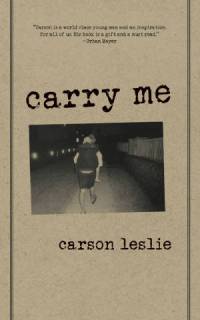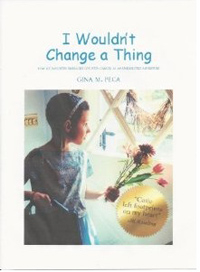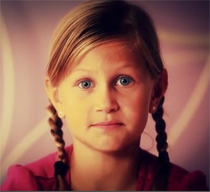
We are living in truly amazing times as scientists are just beginning to understand the power of stem cells. In particular, cord blood stem cells are providing new hope to cancer patients throughout the world. At Save the Cord Foundation, we believe strongly that every expectant parent needs to understand how cord blood is currently used as well as the promising research happening in this field. We want parents to make an educated decision about whether to publicly donate or privately store their future baby’s cord blood.
Cord blood provides a non-controversial source of stem cells. This non-controversial source of stem cells is not only easy to obtain but it is proving to be the “stem cell of choice” again and again for treating many blood cancers. For many children (and adults) suffering from cancer, cord blood is often their only hope.
In fact, some studies now suggest that cord blood may be more effective than bone marrow in treating certain diseases such as leukemia (source: http://www.coloradocancerblogs.org/cord-blood-matched-unrelated-donor-bone-marrow-transplant/ ).
Did you know that there have been over 35,000 cord blood transplants since the first procedure was performed in 1988? Did you know that cord blood has been approved by the FDA for the treatment of more than 80 different diseases including leukemia, lymphoma and sickle cell anemia?
Cord blood registries worldwide have been established alongside public registries for bone marrow donors (example: BeTheMatch). When seeking a stem cell donor for a patient, doctors often search for both bone marrow donors and cord blood donors. For certain patients, cord blood is the preferred option.
Stem cells from cord blood have been shown to have distinct advantages over bone marrow stem cells. Cord blood stem cells are less likely to provoke Graft Versus Host Disease (GvHD) than bone marrow. They are much easier to match than bone marrow thanks to fewer matching criteria.
Cord blood stem cells are easy to store and accessible at any time thanks to the freezing process whereas collecting and using stem cells from bone marrow is quite an involved process for the donor. Cord blood stem cells are more primitive (thus easier to adapt) than stem cells that are found in bone marrow for example and collection of cord blood stem cells does not harm the mother or child since it is done post-birth.
You can learn more on the advantages of cord blood stem cells here.
At Save the Cord Foundation, we have seen first-hand how cord blood saves lives. We would like to introduce you to two wonderful boys. Meet Dylan and Noah.

Dylan: Being a kid thanks to cord blood!
Dylan Praskins was diagnosed with Acute Lymphocytic Leukemia (ALL) at a mere 2 months old. His cancer was very aggressive and he was considered very high risk because he was not even 90 days old at the time. He was immediately put on chemo and doctors determined that a cord blood transplant would be his best option. Read Dylan’s story which his parents describe as “nothing short of a miracle.”

Noah: Starting school and enjoying life thanks to a cord blood transplant
Noah Swanson was 10 months old when he started to develop chronic ear infections. A simple blood test revealed that his white blood count was dangerously low. At 2 years of age, Noah was diagnosed with myelodysplastic syndrome (MDS). Find out how cord blood saved Noah’s life.
Today’s children are both key to this evolution in medicine of using cord blood stem cells and potentially its greatest beneficiaries. More than ever, we need expectant parents to be pro-active about saving cord blood (whether they store it privately or donate it). All you need to do is meet someone like Dylan Praskins or Noah Swanson who has been helped by a cord blood transplant and you will see why we consider it such a valuable resource.
In addition to using cord blood to treat many blood cancers, there are numerous clinical trials underway using cord blood to potentially treat things like acquired hearing loss, cerebral palsy, perinatal stroke, autism, HIV and much more. This is exciting science that is quickly becoming applicable medicine for the general population. Find out more about the latest cord blood research.
The debate on cord blood is over. We know now that it is used to treat blood cancers and is highly effective. We know now that it is a non-controversial source of stem cells that is easy and harmless to collect. We know it has distinct advantages over bone marrow stem cells and can be the preferred treatment option for many patients. Yet, currently, cord blood is simply thrown away as medical waste in over 95% of births. Why? Lack of awareness about cord blood is the main reason. Logistics and costs are also major challenges for both hospitals and parents.
Save the Cord Foundation is working to change this through extensive educational outreach and supporting ground-breaking programs to hopefully, one day, make cord blood collection the standard of care for births. Help us to achieve this goal! Join the cord blood movement or make a donation.
So why should you save your baby’s cord blood? We can give you 80+ reasons! Please don’t throw your baby’s cord blood away. You do have options. If you are pregnant (or know someone who is), feel empowered and be pro-active. Talk with your doctors about either privately banking your baby’s cord blood or donating it to a public bank so that it can help someone waiting for a match. If there is not a public donation program at your hospital, a “hybrid bank” may be able to help you donate (visit our site www.SaveTheCordFoundation.org for a list of options).
There is not a bad choice. However, if you choose to do nothing, your child’s cord blood will be thrown away. . . simply thrown away as medical waste.
Give life twice. #SAVETHECORD
Author: Save the Cord Foundation Staff













Pingback: How can a baby be a hero? | Four-Square Clobbers Cancer